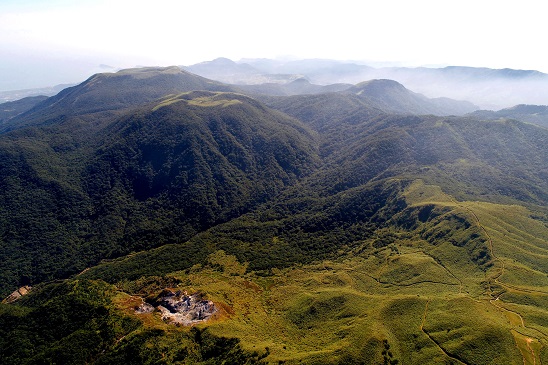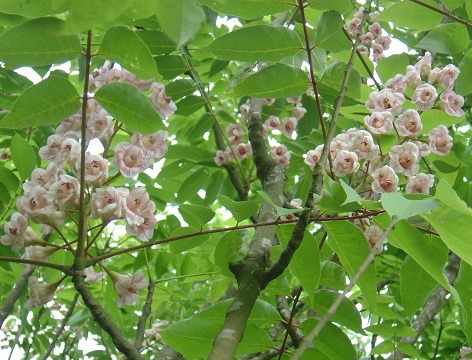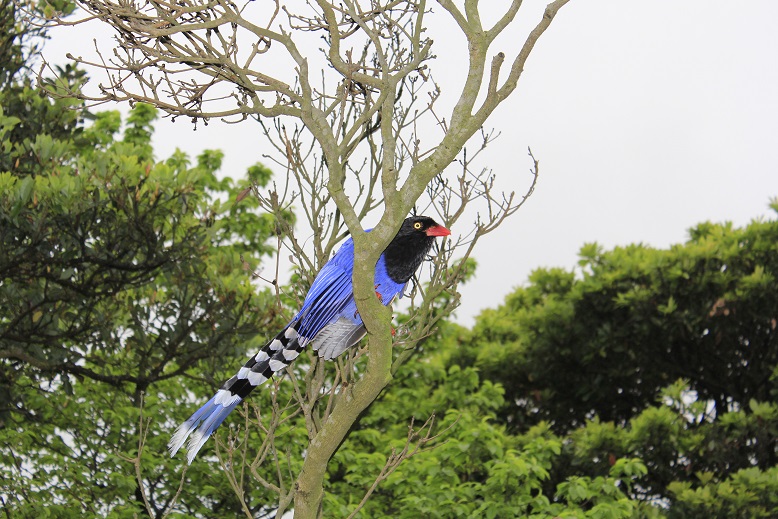The History of the Park
During the Japanese Occupation Period, a part of Datun Volcano group was designated as the intended site of the “Datun National Park,” which encompassed areas such as Mt. Qixing, Mt. Datun and Mt. Guanyin. However, the plan was put on hold after the start of the Second World War. In 1963, the Tourism Affairs Section of the Ministry of Transportation and Communications commissioned the Taiwan Provincial Bureau of Public Works to re-zone and combine the Yangmingshan Park areas of Mt. Qixing, Mt. Datun, Jinshan and the northern coastal districts of Yehliu and Cape Fugui into the “Yangmingshan National Park” spanning approximately 28,400 hectares. However, the plan was also shelved due to the absence of a law regarding national park legislature.
In 1981, based on the proposal of General He Yingqin and the related research organizations, the Yangmingshan National Park plan was officially promulgated in 1985. The Yangmingshan National Park Headquarters and National Park Police were established on September 16 1985 and March 13 1986, respectively, to promote and develop various park management affairs.
Geographical landscapes and boundary area

The Datun Volcano Group
Yangmingshan National Park is situated on the northern edge of the Taipei Basin, and is bordered on the east by Mt. Huangzui and Mt. Wuzhi, to the western foothills of Mt. Honglu and Mt. Xiangtian, the northern edge by Mt. Zhuzi and Tudigong Ridge, and to the south by the southern foothills of Mt. Shamao. The park covers a total area of approximately 11,334 hectares, with elevations ranging from 56 to 1,120 meters above sea level.
Seasonal Scenery
Due to its latitude and elevation above sea level, the climate patterns of Yangmingshan National Park feature both sub-tropical and warm temperate climates, with prominent seasonal monsoons.
During the spring season of February and March, the weather on the Yangmingshan area remains unstable, alternating between warm and cold weather. During this period, the camellia and plum blossoms that bloom in winter give way to budding and blooming of Taiwan Cherry, Azalea, Chinese Hydrangea, Taipei Climbing Violet, Disporum disporum shimadai and Formosan Snow-bell; new buds also sprout on the tall arboreal trees, decorating the mountains with splendid colors of red, pink, white, yellow and green, chasing away the monotonous drab of winter and livening up the natural scenery. In the summer, the south-west monsoons bring about occasional thunderstorms in the afternoon. As the rainy mist dissipates, rainbows often appear across mountain valleys, showcasing a different side of Yangmingshan during rainy days.
In the autumn month of October, silvergrass forms an undulating sea of flowers; as the season progresses, the red leaves of the maple adorn the treetops, interweaving with golden leaves to form the famous “Datun Autumn Scene.” In winter, the northeast monsoons sweep over the mountains with chilling rains. This combination of high humidity and cold temperatures turns the park into a foggy and misty world during particular strong periods of a cold spell, snow can even occur around the areas of Mt. Qixing, Mt. Zhuzi and Mt. Datun, covering everything in a silvery whiteness.
Local Flora

Bretschneider’s tree
The overall flora distribution within the park is heavily influenced by the volcanic terrain and the northeast monsoons. Low temperatures and high humidity during the winter season have resulted in the “altitude migration” of plant species, such as Formosan gentian and weelstamen tree, which originally grows at mid-altitudes of 2,000 meters above sea level.
The floral life of the park can be classified into three major categories: aquatic, grassland and forest vegetation. Aquatic plants are distributed mainly in crater marshes and reservoir ponds; species like roughseed bulrush, Japanese spikerush, Taiwan bulrush and water chestnut are commonly found. The “Isoetes taiwanensis DeVol” is an endemic species of which the highest natural population is found in Menghuan Pond on the southeastern foothills of Mt. Qixing.
Arrow bamboo and silvergrass are the dominate grassland plants and are normally found in areas at altitudes of 600 m and above.
The forest vegetation is primarily dominated by the Laurel family, such as red nanmu and large-leaved machilus. Taiwan adinandra and wild cherries are also common tree species. Species chosen for artificial forestation comprise mainly of Taiwan acacia, Japanese cedar, Formosan sweet gum, Black pine and Okinawa pine. The vegetation within the Park will often change its appearance to coincide with seasonal changes, a wonderful sight not to be missed.
Local Fauna
The diverse terrain and abundant vegetation of Yangmingshan National Park has provided an excellent habitat for activities and foraging of various wildlife, and has resulted in a rich abundance of animal species.
In the Park, medium-sized mammals like the red-bellied tree squirrel, Formosan hare, Chinese ferret-badger and Formosan macaque are found in large quantities; species like Formosan masked civet, Formosan pangolin and small Indian civet are also occasionally observed. Many of the animal species, including Formosan macaque, Formosan wild boar, Reeves''s muntjac, Formosan pangolin, Formosan greater horseshoe bat, Formosan lesser horseshoe bat, Formosan leaf-nosed bat, and Taiwan tube-nosed bat are all endemic species of Taiwan.

Formosan Blue Magpie
For bird species, aside from dominant species like the vinous-throated parrotbill, white eyes nun babbler, bamboo partridge and Muller’s barbet that are frequently found in lower elevations, the presence of Formosan blue magpie -- one of Taiwan’s endemic species can also be observed. Each year, in October and March bird species are most abundant within the park, due to the presence of migratory birds. Commonly seen species are the pale thrush; barn swallow, a summer migratory bird, can be found near the Lengshuikeng and Xiaoyoukeng areas from April to September.
Taipei tree frog, rice field frog, long-legged frog, and central formosan toads are some of the more abundant amphibian species found in the Park. Common reptiles that are found in the Park include yellow-mouthed japalura, Indian forest skink, five-striped blue-tailed skink, bamboo viper, striped keelback, oriental rat snake and Smooth green Snake.
During spring and summer from May to August, many brilliant colored species of butterflies can be found in the Yangmingshan areas. Hundreds butterflies from the Tirumala species (“brush-footed butterfly”) can be found flying in the air over the grassy areas near the top of the mountains. Other than the Tirumala, the Park also has many species of the Papilionidae (“swallowtail butterfly”), such as the commonly found Great Mormons, Common windmills, Common peacocks and Spangles. Insects like the summer cicadas, katydids in the autumn evenings, and many other species also contribute to the rich biodiversity in Yangmingshan National Park.
History and Culture
The Datun Volcano Group contains rich ecological resources and was visited by people of the prehistoric Yuanshan culture around 3,000 to 2,000 years ago. They travelled along the creeks originating in the park to conduct hunting and gathering activities.
Before the Han Chinese people settled in the area, the Datun Volcano Group was the traditional hunting ground and traditional sites of the ancestors of the northern Plains indigenous tribes and the mid-to-late-age Shihsanhang culture people. Aside from hunting and gathering, these people also mined sulfur to trade with Chinese merchants, the Spanish and Dutch. From 1697 and 1698 of the Qing Dynasty Yu Yong-he , a Chinese explorer, came to Taiwan to purchase raw materials for making gun powder. His travels took him to the areas of the Dahuangzui sulfuric fumaroles (the Longfenggu area between the present day Xingyi Road and Shamao Bridge). However, fearing that local people may engage in the manufacturing of illegal gun powder for use in uprisings, the Qing Court ordered the banning of sulfur mining after the Lin Shuang-wen Rebellion of 1786. The sulfur mines were guarded by garrisons, and the surrounding areas were periodically burned during each year. By 1877, Qing officials Ding Ri-chang and Shen Bao-zhen petitioned the Qing Court to relax the ban on sulfur mining, and the government hired workers to mine and refine sulfur. In 1886, Liu Ming-chuan, the Governor of Taiwan, formally requested the establishment of a Sulfur Commission in Taiwan to oversee the mining and trading of sulfur. Since that time, sulfur has become one of the Four Commodities of Taiwan, along with camphor, tea, and sugar. The history of sulfur mining in the Yangmingshan area has a significant place in the history and the development of Taiwan.
It was during the Qianlong Period of the Qing Dynasty that the Han Chinese people began migrating and settling in the Datun Volcano Group, and have since developed industries that included the making of indigo dye, tea plantations, cattle farming, charcoal, masonry, citrus farming, and rice farming. Since the Yongzheng and Qianlong period, the Fanzaijing, Qixingdun, Shuangxi, and Shuixiantou creeks have channeled abundant water from the Yangmingshan areas into supplying the development of agriculture and settlements in the greater Taipei Basin area.
After the Japanese Occupation, the natural resources and scenery of Yangmingshan began to see planned development and utilization. Various access roadways and hiking trails were constructed to promote hiking activities; public bathhouses, hot spring inns and recreational clubs were also established. The development of hot spring industries in the area became a favorite destination for locals and affluent citizens of Taihoku Prefecture (Taipei area during the Japanese Occupation era) to relax and engage in recreational activities. In addition, as part of the Governor-general of Taiwan’s effort to improve rice cultivation, the Zhuzihu was selected as the site for cultivation of Japanese rice. An operational center that oversaw the management of cultivation, grain collection and distribution was also established, and the result of the rice cultivation experiment was named “Ponlai Rice.” Thus, Zhuzihu is affectionately known as the “Cradle of Taiwan’s Ponlai Rice.”
After the end of the Second World War, the Nationalist Government relocated to Taiwan. As the area largely maintained the roadways, parks and hot spring villas established during the Japanese Occupation Era, the Late President Chiang Kai-shek chose the area as his temporary residence during the early days in Taiwan. In time, many of the party and political units also established offices in Yangmingshan. In 1949, the “Tsaoshan Administrative Bureau” was established to manage the local autonomous affairs of Tsaoshan, Shilin and Beitou areas. The Bureau was later renamed to “Yangmingshan Administrative Bureau” as a special administrative district. As Taipei City became a Special Municipality in 1968, the areas were included into the Shilin and Beitou Districts of Taipei City, but the name “Yangmingshan” remains in use until today.
Geographical terrain and scenery
The primary geological structures of the Park are made up of the Datun Volcano Group, composed of volcanic and sedimentary rocks. The conic and composite volcanoes, explosive vents, volcanic craters, and crater lakes constitute the unique geological and topographical landscapes of this area.
The fumaroles and hot springs of this area are distributed mainly around the “Xinzhuang Faultline” between Beitou and Jinshan. They were formed when the surface groundwater seeps underground, then heated by the residual heat sources then penetrate to the surface through rock fissures in the Earth’s crust, forming the unique volcanic landscapes. The Dayoukeng, Xiaoyoukeng, Macao and Dahuangzui areas in the Park exhibit intense steam fumarole activities, and the various hot springs in the Park are already renowned far and wide.
In addition to the volcanic and geothermal activities described above, the Yangmingshan National Park also boasts important natural scenery resources like the various unique mineral beds, rock strata, spectacular waterfalls, and clear creeks radiating outwards.